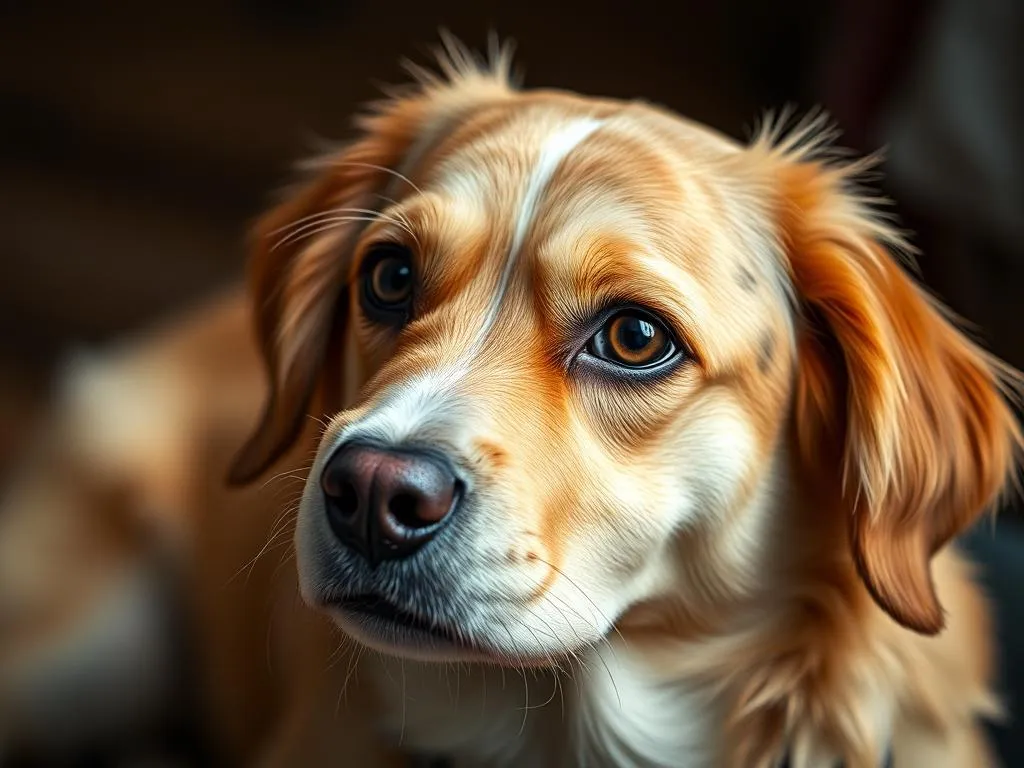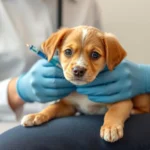
Introduction
Pica in dogs is a perplexing and often concerning behavioral issue that leads canines to consume non-food items. Understanding pica is crucial for dog owners, as it can indicate underlying health problems or behavioral issues that need to be addressed. In this comprehensive article, we will explore the definition of pica, its symptoms, causes, diagnosis, treatment options, prevention strategies, and how to manage life with a dog that exhibits this behavior.
Understanding Pica
What is Pica?
Pica in dogs refers to the compulsive eating of non-nutritive substances. While most dogs have a natural curiosity and may occasionally chew on or ingest inappropriate items, pica takes this behavior to an extreme level. Common items ingested by dogs suffering from pica include:
- Plastic objects (toys, bags)
- Fabric (clothes, blankets)
- Paper (books, cardboard)
- Soil and grass
- Wood (furniture, sticks)
This behavior can pose significant health risks, including intestinal blockages or poisoning, making it essential for dog owners to recognize and address it promptly.
Symptoms of Pica
Identifying pica in dogs involves observing both behavioral and physical symptoms.
Behavioral Signs
- Persistent chewing or eating of non-food items: Dogs may be seen munching on things like rocks, plastic, or fabric.
- Increased scavenging behavior: Affected dogs may rummage through trash or other areas where non-food items are available.
- Excessive boredom or anxiety: Dogs exhibiting pica often display signs of boredom or stress, such as pacing, whining, or destruction of household items.
Physical Signs
- Vomiting or diarrhea: Consuming non-food items can irritate the gastrointestinal tract, leading to vomiting or diarrhea.
- Abdominal pain or discomfort: Dogs may show signs of discomfort, such as whining, lethargy, or reluctance to move.
- Dental issues: Chewing on hard or inappropriate objects can lead to dental fractures and other oral health problems.
Common Causes of Pica
Understanding the root causes of pica in dogs is vital for effective intervention. Here are some common factors that contribute to this behavior:
-
Nutritional deficiencies: Inadequate nutrition can lead dogs to seek out non-food items in an attempt to fill dietary gaps. For example, deficiencies in certain minerals, such as iron or zinc, can lead to pica.
-
Boredom or lack of stimulation: Dogs that do not receive enough mental and physical stimulation may resort to chewing and eating inappropriate items as a way to engage themselves.
-
Anxiety and stress: Just like humans, dogs can experience anxiety. Stressors such as changes in the household, separation from owners, or loud noises can trigger pica behavior.
-
Health issues: Certain medical conditions, such as gastrointestinal problems or parasitic infections, may cause dogs to experience pica as a side effect. If a dog is in pain or discomfort, they may chew on objects to cope.
Diagnosing Pica in Dogs
When to See a Veterinarian
If you suspect your dog is engaging in pica, it’s essential to consult a veterinarian. Signs that warrant a visit include:
- Regular ingestion of non-food items
- Vomiting or noticeable distress after eating non-food substances
- Behavioral changes, such as increased anxiety or lethargy
A professional evaluation is crucial not only for diagnosing pica but also for identifying any underlying health issues.
Diagnostic Tests
A veterinarian may employ various diagnostic tests to determine the cause of pica in dogs. These may include:
-
Physical exams: A thorough examination can reveal any signs of distress, dental issues, or gastrointestinal problems.
-
Blood tests: These tests can help identify nutritional deficiencies or underlying health problems.
-
Behavioral assessments: The veterinarian may observe your dog’s behavior in different settings to understand triggers and patterns associated with pica.
Treatment Options
Once diagnosed, there are several treatment options available to address pica in dogs effectively.
Behavioral Modification
Behavioral modification techniques can help reduce pica behavior in dogs. Some effective methods include:
-
Redirecting behavior: When you catch your dog attempting to chew on a non-food item, redirect their attention to an appropriate toy or chew item.
-
Positive reinforcement: Rewarding your dog with treats or praise when they engage in acceptable chewing behavior can reinforce good habits.
-
Training commands: Teaching commands like “leave it” or “drop it” can be beneficial in controlling pica behavior.
Nutritional Adjustments
Identifying and addressing nutritional deficiencies is vital. Consider the following:
-
Consult a veterinarian: A veterinary professional can recommend appropriate dietary changes or supplements to ensure your dog receives balanced nutrition.
-
Quality dog food: Providing high-quality dog food that meets your dog’s specific needs can help prevent pica due to nutritional deficiencies.
Addressing Anxiety and Stress
If anxiety or stress is contributing to your dog’s pica, consider these techniques:
-
Provide a safe space: Create a comfortable environment where your dog can retreat when feeling stressed.
-
Calming products: Consider using calming collars, pheromone diffusers, or anxiety wraps designed to soothe anxious dogs.
-
Medications and therapies: In severe cases, a veterinarian may prescribe medications or recommend behavioral therapy to address anxiety.
Environmental Management
Creating a safe and stimulating environment is crucial in managing pica in dogs. Here are some strategies:
-
Remove harmful objects: Keep non-food items that your dog may be prone to eating out of reach.
-
Provide interactive toys: Engage your dog with toys that stimulate their mind and keep them occupied, reducing the likelihood of turning to inappropriate items.
Preventing Pica in Dogs
Providing Mental Stimulation
To prevent pica, it’s essential to keep your dog mentally and physically stimulated. Consider these activities:
-
Interactive toys: Toys that dispense treats or require problem-solving can keep your dog engaged.
-
Regular exercise: Daily walks, fetch games, and agility training can provide the physical outlet your dog needs.
Regular Veterinary Check-Ups
Routine veterinary check-ups are vital for maintaining your dog’s health. Regular visits help:
-
Monitor health: Regular assessments can catch potential health issues early, reducing the risk of pica triggered by medical problems.
-
Update vaccinations: Keeping vaccinations up to date ensures your dog’s overall well-being.
Early Training and Socialization
Starting training early can help prevent pica behavior:
-
Basic commands: Teaching basic commands such as “sit,” “stay,” and “leave it” can create a foundation for good behavior.
-
Socialization: Exposing your dog to various environments, people, and other animals helps them develop confidence and reduces anxiety.
Living with a Dog that Has Pica
Daily Management Strategies
Managing a dog with pica requires vigilance and strategy. Here are some practical tips:
-
Supervise closely: Keep an eye on your dog, especially in environments where they may find non-food items to chew on.
-
Redirect behavior: When you catch your dog in the act, redirect them to an appropriate item.
-
Consistent training: Reinforce training consistently to help your dog understand what is acceptable to chew on.
Support for Owners
Dealing with a dog that has pica can be challenging. Here are some resources and support options:
-
Veterinary behaviorists: Consulting with a behaviorist can provide tailored strategies to manage your dog’s specific needs.
-
Support groups: Joining a community of dog owners facing similar issues can offer emotional support and practical tips.
Conclusion
Understanding and addressing pica in dogs is crucial for the health and well-being of your canine companion. By recognizing the symptoms, identifying causes, and implementing effective treatment and prevention strategies, dog owners can help their pets lead healthier, happier lives. Taking proactive steps and maintaining overall dog health should be a priority for every owner.
FAQs about Pica in Dogs
What should I do if my dog has pica?
If you suspect your dog has pica, consult your veterinarian for evaluation and guidance. They will help identify underlying causes and recommend appropriate treatment options.
Can pica be a sign of a serious health issue?
Yes, pica can indicate underlying nutritional deficiencies, anxiety, or other health problems. It’s essential to have a veterinarian assess your dog if pica is observed.
How can I prevent my dog from developing pica?
Providing mental stimulation, regular exercise, quality nutrition, and early training can help prevent pica from developing in dogs.









